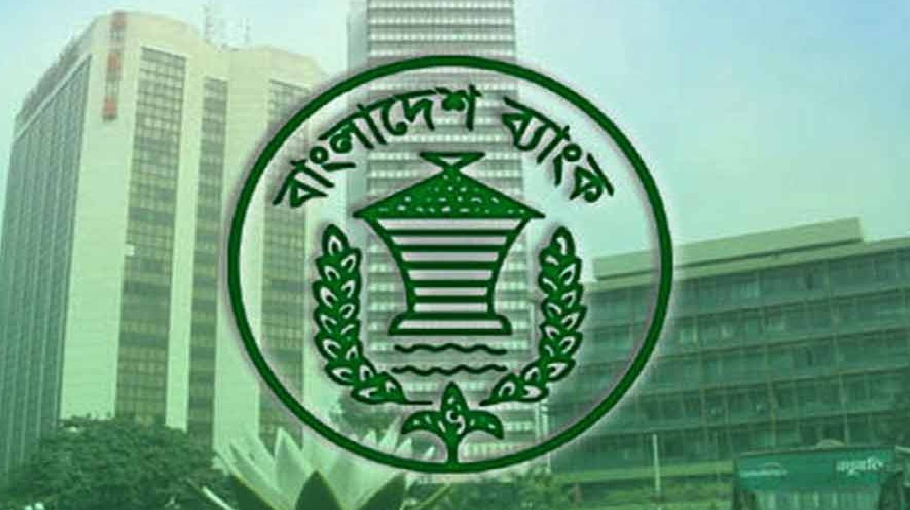BB sells record 7.65b US dollar to stabilize forex market

Bangladesh Bank (BB) has sold a record US dollars of 7.65 billion directly to commercial banks to stabilize the forex market till January 3 in the current fiscal 2022-23.
The Central Bank has been selling dollars from the reserves from the last fiscal year 2021-22 to meet the market demand. The BB already sold a record $7.62 billion to commercial banks in the last fiscal.
The government and the central bank have taken initiatives to cut the import for reducing the pressure on reserves.
Although new LCs (letters of credit) have declined, the cost of foreign exchange has not come down due to pressure to repay earlier liabilities.
During the last five months until November, the payment of import duties increased by 4.41 percent.
Market analysts said the Central Bank never released such a big amount of dollar in the history of Bangladesh in a single fiscal year.
Despite that, market volatility did not stop, they said, adding that the crisis occurred due to the significant rise in demand for US dollars in the inter-bank foreign exchange market as the country’s import demand had picked up.
However, the supply of dollars is less than the demand in the market. That is why, Bangladesh Bank is selling dollars from the forex reserves to the banks at inter-bank rates every day.
Dr Zahid Hussain, former lead economist of the World Bank's Dhaka office, said, “The Central Bank sold more than seven billion dollar within only six months in the current fiscal year while they sold $7.60 billion in the last fiscal year 2021-22. The Bangladesh Bank has claimed that the number of LC openings and settlements declined while exports increased in the last two months. Why then is the Central Bank selling record amount of dollars from the reserves?”
He mentioned that if the Central Bank sold more than $1 billion to the commercial bank, it would create pressure for the forex reserves.
He suggested the Central Bank leave forex rate on the market and monitor strictly different issues to reduce pressure on reserves including restrictions of LCs and restrictions on foreign visits for the government employees.
An official of the Central Bank said that imports of all kinds of products, including industrial raw materials and capital equipment, increased due to the return of favourable investment climate in the country after the Corona crisis.
He said that apart from this, the cost of imports was also increasing due to the abnormal hike in prices of all commodities including fuel oil and food products in the world market.
“Some steps have been taken by the central bank to reduce imports. As a result, imports are decreasing significantly now. The money market will also return to normal,” he mentioned.
“The central bank’s job is to keep the money market stable. The dollar was bought when there was a supply of foreign exchange in the market. Now that supply has dwindled, the central bank is selling dollars in line with market demand,” another BB official said.
However, the Bangladesh Bank depreciated taka against the dollar in the last several months to stabilize the forex market.
Taka was depreciated by about 25 percent against greenback in a year.
Market analysts said the central bank usually sells US dollars directly to commercial banks to meet higher demand for the greenback. It is a sign of the economic stability of the country, they added.
Although in the interbank forex market, one dollar now sells at Tk 105.90 - 107, the green back is actually sold at the rate of Tk 112 to Tk 113 in the open or kerb market.
Hafizur Rashid Fakir, the owner of Bijoy Money Exchange, told Bangladesh Post, “US dollar was sold at the rate of Tk 112-113 against greenback on Monday. The dollar rate will be reduced in coming days in the open or kerb market as the supply of dollar is rising.”
Meanwhile, in the first six months (July-December) of the current fiscal year 2022-23, Bangladesh Bank has sold about $7.47 billion from reserves while in the first six months of FY 2022, the amount of sales was $5.14 billion.
Besides, $18 million were sold in the three days of this January (January 1 to 3). As a result, the amount of dollar sales from reserves in the current financial year has reached at $7.65 billion.
Due to the Corona pandemic, imports fell sharply during the last fiscal year 2020-21, but remittances and export earnings have leaped.
That is why, the supply of dollars in the market has increased. The central bank bought a record $8 billion in the fiscal year 2020-21 to keep the dollar afloat.
In its continuation, in the first month of July of the last 2021-22 fiscal year, 205 million dollars were bought.
However, since August 20 in the last fiscal, the picture has reversed. As the corona situation began to normalize, imports began to increase rapidly.
Although export earnings increased, remittance inflow continued to decline. Besides, foreign exchange reserves also decreased.
Besides, dollar also appreciated against the local currency. As part of its move, Bangladesh Bank started selling dollars from August to keep the market stable.
According to the central bank, on August 5 last year, the dollar was sold at Tk 84.80 per dollar in the interbank market.
The country’s foreign currency reserves stood at $32.57 billion on Sunday, according to the BB data. On August 24 last year, the reserves crossed the $48 billion milestone, surpassing all past records.




